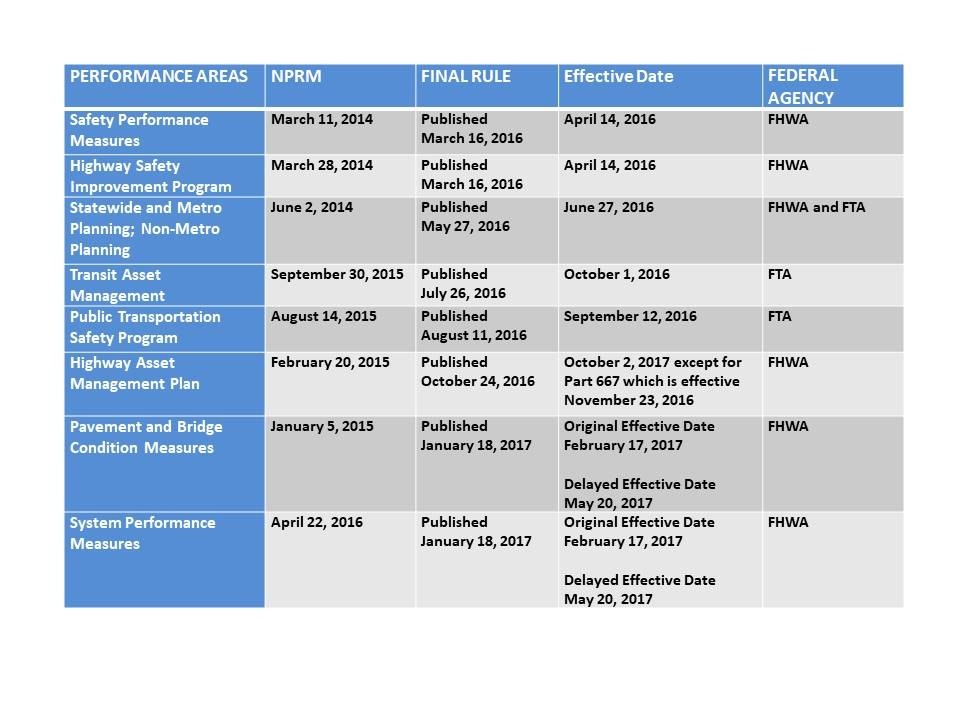Transportation Performance Management
Transportation Performance Management (TPM) is part of the MAP-21/FAST Act. It is a strategic approach which uses system information to make investment and policy decisions to achieve outcomes related to seven national performance goals. These goals include safety, infrastructure condition, congestion reduction, system reliability, freight movement and economic vitality, environmental sustainability, and reduced project delivery delays. For more information on TPM, visit Federal Highway Administration's (FHWA) Transportation Performance Management.
As part of TPM, state DOTs are required to establish performance targets for national performance measures related to safety, infrastructure condition, and system performance.
Additional information related to the performance measures mandated by FHWA can be found at the links below:
Performance Measure 1 (PM1) - Safety
Performance Measure 2 (PM2) - Pavement and Bridge Condition
Performance Measure 3 (PM3) - System Condition
TPM is also used to make decisions about where to invest resources. Asset management plans provide the framework for making these investment decisions while transportation and planning agencies document processes, investment strategies and trade-off decisions in various management plans. For more information, please visit How TPM and Asset Management Work Together. Information relating to all final rules which support TPM is included below.
